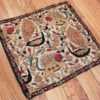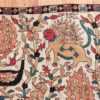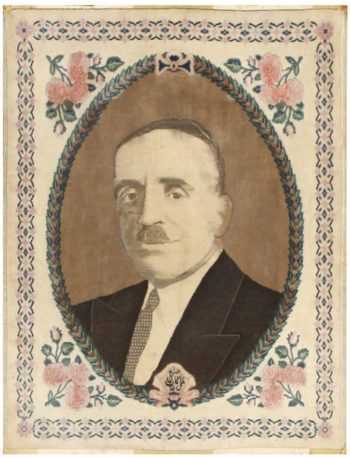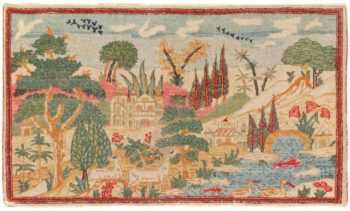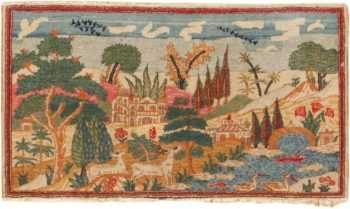17th Century Silk Persian Possibly Kashan Textile 49591
Breathtaking 17th Century Silk Persian Possibly Kashan Textile, Country of Origin / Rug Type: Persia, Circa Date: 17th Century – This collectible and rare textile is among one of the rarest of rare. It is a silk piece that was created in the 17th century, possibly near Kashan. The first reason why this is a significant piece is that very few pieces of this period exist – especially the antique textiles. Much of what we have from the Persian weaving industry is in fragments, and certainly not in the state of preservation of this piece. This alone makes this magnificent textile an important piece in the history Persian weaving, but it also has another story to tell.
This antique embroidery is a significant historical piece, and although we cannot be certain, it may have been a part of the inventory of the Royal Courts. If not the Royal Courts, it would certainly have been among the inventory of someone of high status. Several features of the piece might suggest this. The first is that this textile features the lion with sword and the sun motif, which is one of the prominent emblems of the Persian empire.
The lion and sun motif goes back to the 12th century and references symbolism that dates to Babylonian and ancient Near Eastern traditions. It was used on the flag of Iran as recently as 1979. During the Safavid Dynasty when this piece was created, the symbol stood for the two pillars of society, which were the state and religion.
This symbol was prominent during the time of Shah Abbas during what has become known as the Golden Age of Persian Arts. It was during this time that some of the finest carpets in the world were produced and exported throughout Europe. Another clue is that includes the peacock as a prominent symbol, and peacocks were considered the guardians of Persian royalty in mythology.
Yet another clue that this textile was made for someone of high rank, rather than for commercial trade is that it is made of silk rather than wool. Originally, silk was only produced in China. There is a charming myth that a member of Persian royalty tucked a few silk cocoons into the sleeves have her garment and started the silk industry in Persia.
By the reign of Shah Abbas from 1587 to 1629, Persia had developed a state monopoly over the silk trade. During that time, sumptuary laws prevented anyone who was not of a certain status to possess it, and there were restrictions on how much you could own according to your status in society.
Although we will never know the true origins and story of this gorgeous Iranian textile, we do know that it is significant for many reasons. We can only guess the many travels this antique Kashan textile has been through and its true origins, but it would make an excellent addition to a museum collection, gallery, or private collection. It is a perfect size for framing and display.











